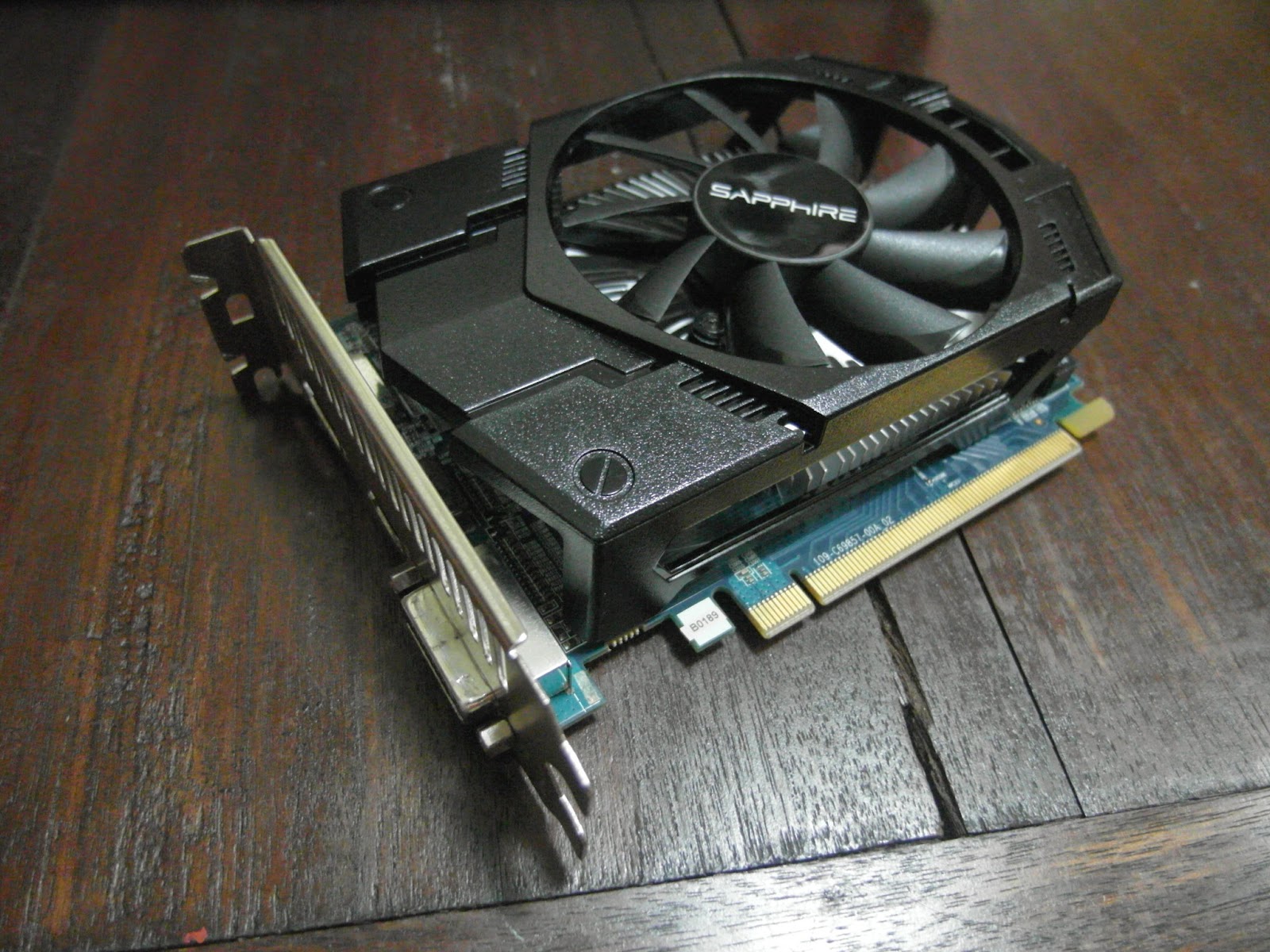Specs of the original PC are :
Intel Core i3-550 (dual core)
Intel HD Graphics
2 GB RAM
500 GB HDD (the product in the website has a 320 GB HDD)
and then... MAXIMUM PAWAAAAA! Basically what went on in my head.
Initially I thought the upgrade would be easy, throw in a graphics card, a little more RAM and hmmm, maybe even an SSD and the computer would blow me away with the sheer awesomeness of its power! So I went to the most reliable source anybody would pick, the internet, and found on Sapphire's website a performance chart. (View here) And since my bro and I didn't want to have to change parts which are already available, I decided to pick a graphics card which didn't require a 6-pin PCI-E connector, the R7 250.
I chose Sapphire cause it had the coolest looking shroud and fan.
However, life reminds you, well, let's be honest, in rather harsh ways that things don't go that smoothly. Basically the power supply included in the PC was a 250W power supply. And even for the R7 250, a minimum 400W power supply was recommended in order for the card to have sufficient power for it to perform smoothly.
Yup, right there.
So, a certain percent of the budget for all the parts had to be reduced to fit in a new power supply. Which then prompted a new thought, "Since we were going to pick a new power supply anyway, new power supply, PCI-E connector, graphics card which requires PCI-E connector, stronger card!" And there's where the R7 250X came in, a stronger card, which would also allow for more demanding games. After a lot more research, and also watching a video from LinusTechTips (This one), I found out that AMD cards are better optimized for Starcraft II, yielding about 60 frames per second even using the HD 7770 which was re-skinned as the R7 250X (based on this review). With all this taken into account, the R7 250X was the card to go for.
All that aside, the serious business, getting the stuff installed. For the R7 250X, it requires a minimum 500W power supply, I went with the Cooler Master Elite V2 550W power supply, a little bit more just for more head room, Kingston 2 GB 1333 MHz RAM and of course the R7 250X.
Installing it was pretty simple :
(Above) The R7 250X with 1 GB of GDDR5 VRAM, an AMD/ATI card from Sapphire.
(Above) 2 GB DDR3 1333 MHz Kingston RAM.
(Above) The 550W power supply which I had bought and installed much earlier.
Installing the graphics card in the case provided by eMachines, you will realize that the PCI-E slots are covered. The metal covers are supposed to be pried open with a pair of pliers before the card can be inserted. For me this was not fun to do, however aftermarket cases come with easily removable slot covers which are removed by unscrewing a small screw holding the slot cover in place. And basically after installing a card there's no going back.
(Above) Everything installed, and although the graphics card does come with a reminder, if you're installing a graphics card, please connect the 6-pin PCI-E connector to avoid destroying your brand new graphics card.
With all of the new components installed, how do the games run you ask? Well an easy breakdown. Diablo III, which you can easily turn on a built in frame rate counter ran at a constant 43 FPS. Why 43? Well, I suspect the CPU to be a bottleneck, however, no matter how much action went on the screen the frame rate stayed at 43. Starcraft II also stayed at around 50-60 FPS, it did fluctuate a lot especially as action started to get heavy on screen, however it should run smooth unless you have 4 players duking it out with maxed out armies.
I tested a few other equally demanding games like Counter-Strike Global Offensive and Dota 2. While I didn't have a frame rate counter on, if you have been playing on integrated graphics before this, the difference is too apparent and significantly better.
Farid











No comments:
Post a Comment